Notes: The Seacombe branch, on which Liscard & Poulton station stood, was the last addition to the Wirral Railway Company’s network of lines that stretched from Birkenhead to West Kirby and New Brighton. The Seacombe route left the New Brighton branch at Seacombe Junction, beyond which heavy engineering was required to drive the line through a sandstone ridge towards the west bank of the Mersey at Seacombe Ferry Terminal. The line opened on 1 June 1895.
 Liscard & Poulton station was incomplete when the line opened, and it first appeared in the timetable in October 1895. Its single island platform, with two faces, was in a cutting west of Poulton Road. The platform was reached by a covered walkway from Poulton Road, north of the line; it crossed over the Seacombe-bound track, and a covered set of steps led down to the platform. Waiting facilities were in a timber building, the roof of which also provided a canopy. On the island platform a single-storey brick building contained booking facilities, waiting rooms and staff accommodation. The station had a short coal siding with a 5-ton crane at its western end, north of the passenger lines. A short siding on the south side of the station served a quarry and another private siding served the Wallasey Gas and Water Works. Liscard & Poulton station was incomplete when the line opened, and it first appeared in the timetable in October 1895. Its single island platform, with two faces, was in a cutting west of Poulton Road. The platform was reached by a covered walkway from Poulton Road, north of the line; it crossed over the Seacombe-bound track, and a covered set of steps led down to the platform. Waiting facilities were in a timber building, the roof of which also provided a canopy. On the island platform a single-storey brick building contained booking facilities, waiting rooms and staff accommodation. The station had a short coal siding with a 5-ton crane at its western end, north of the passenger lines. A short siding on the south side of the station served a quarry and another private siding served the Wallasey Gas and Water Works.
At its opening Liscard & Poulton station was served by nineteen weekday trains in each direction that ran between Seacombe and West Kirkby. There was also a sparse service to New Brighton.
On 1 May 1898 services provided by the Wrexham Mold & Connahs Quay Railway (WM&CQR) also began to call at Liscard & Poulton. The service operated with the agreement of the WR and ran from Seacombe to both Wrexham and Chester Northgate, using a route between Bidston and Hawarden Bridge promoted and built by the WM&CQR and the Great Central Railway (GCR). This endeavour effectively bankrupted the WM&CQR which was absorbed into the GCR on 1 January 1905.
In 1899 the WR made a greater effort to provide a more useful service between Seacombe and New Brighton, which gained the nickname of the Seacombe Dodger. In 1902 Wallasey Corporation electrified its tramway system, which passed close to Liscard & Poulton station. This competition reduced the passenger loadings on the Seacombe Dodger and, from the end of 1905, it ran only on Bank Holidays; it was discontinued altogether in about 1910. The service between Seacombe and West Kirby remained intensive, and regular GCR services also continued, providing Liscard & Poulton passengers with a variety of journey opportunities.
On 1 January 1923 Liscard & Poulton station became part of the London Midland & Scottish (LMS) railway. The LMS took over the running of the Seacombe and West Kirby service. The former GCR lines from Bidston to Wrexham and Chester became part of the London & North Eastern Railway (LNER) who operated trains on these routes.
In summer 1932 the LMS operated sixteen trains to West Kirby and eighteen trains to Seacombe & Egremont from Liscard & Poulton on weekdays. The first departure for Seacombe was at 7.11am and the last was at 9.38pm. The first departure for West Kirby was at 7.26am and the last was at 08.53pm. The very last departure was for Birkenhead Park and it left at 10.26pm. For most of the day the service was at hourly intervals. The summer Sunday service was almost as intensive as that on weekdays, with thirteen trains in each direction, reflecting West Kirkby’s popularity with Liverpudlians as a day trip destination. In addition Liscard & Poulton also had an intensive LNER service both to Chester Northgate and Wrexham Central.
 During the 1930s the LMS resurrected a plan first mooted by the WR to electrify the former WR network. As the WR made an end-on connection with the electrified Mersey Railway (MR) which ran from Birkenhead Park to Liverpool Central, through running between the Wirral and Liverpool would be possible. During the 1930s the LMS resurrected a plan first mooted by the WR to electrify the former WR network. As the WR made an end-on connection with the electrified Mersey Railway (MR) which ran from Birkenhead Park to Liverpool Central, through running between the Wirral and Liverpool would be possible.
The LMS drew up plans and started work in 1936. The Seacombe branch was omitted from the scheme as it was not remunerative enough to justify the expenditure; in any case it was well served by LNER trains that afforded good connections with the rest of the system at Bidston. The electrification was completed by the early part of 1938. On 12 March 1938 the LMS ceased to operate the Seacombe - West Kirby service. The following day, a full electric train service began on the other lines. This left Liscard & Poulton, an LMS station, with only LNER passenger services. The LNER route was very popular both with Liverpudlians, who boarded trains at Seacombe, and the inhabitants of Wallasey, many of whom used Liscard & Poulton to travel to North Wales for walking and camping.
 |
On 1 January 1948 Liscard & Poulton station became part of British Railways’ London Midland Region. Services from Seacombe to Chester and Wrexham continued to operate throughout the 1950s, but British Railways diverted the services to New Brighton and closed the Seacombe & Egremont branch, including Liscard & Poulton station, on 4 January 1960.
Goods services continued to operate through Liscard & Poulton until 1963. The line was lifted shortly afterwards, and the station was demolished. A few years later work began on the construction of the Kingsway Road Tunnel, which used the route of the Seacombe Branch for the approach road and obliterated the site of Liscard & Poulton Station. The Kingsway Road Tunnel opened in 1971.
Tickets from Michael Stewart, Bradshaw from Nick Catford, route map drawn by Alan Young
Sources:
See also Seacombe
See Warren on the New Brighton line
To see other stations on the Wrexham Central to Bidston Line click
Wrexham Central, Wrexham Exchange, Rhosddu, Hope High Level, Buckley (1st station), Chester Golf Club Halt, Birkenhead Junction Golf Club Platform, Sealand Rifle Range Halt, Burton Point, Storeton,
See also MS&LR Stations between Shotton and Chester Northgate
Chester Junction Golf Club Platform, Sealand, Saughall, Blacon,
Chester Liverpool Road, Chester Northgate
See also related items
The Buckley Railway
Hawarden Loop
Hawarden Bridge
Railways at Bidston |

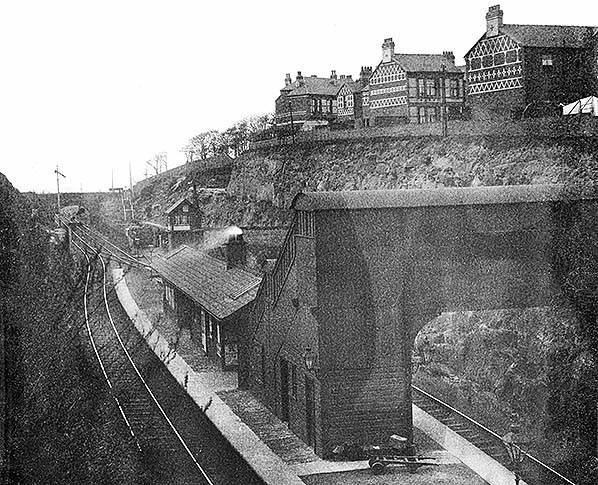
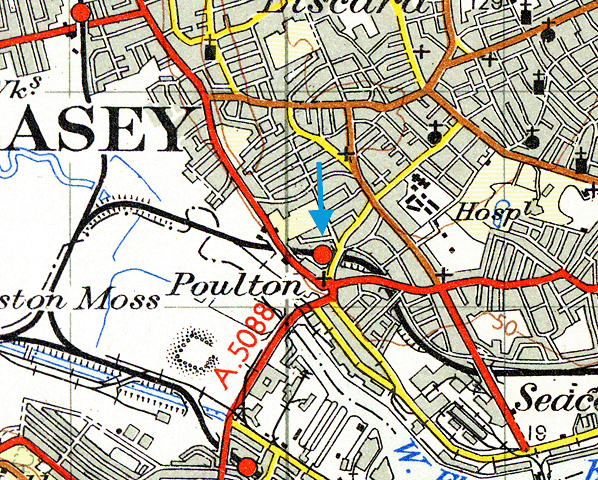
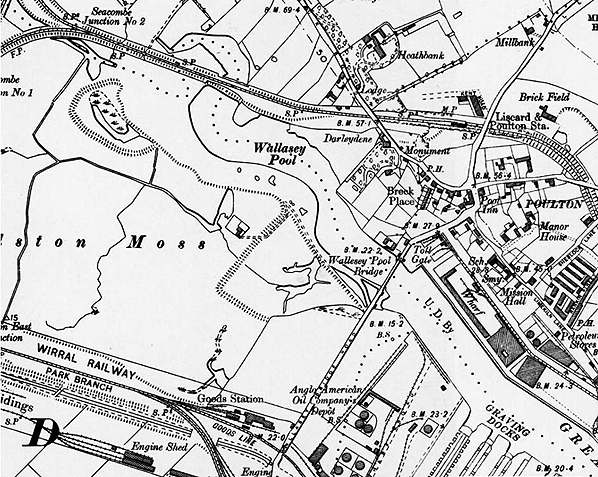 On this 6-inch scale map from 1899 Liscard
& Poulton is shown top right. The map also shows the course of the Seacombe branch towards Seacombe Junction.
On this 6-inch scale map from 1899 Liscard
& Poulton is shown top right. The map also shows the course of the Seacombe branch towards Seacombe Junction.
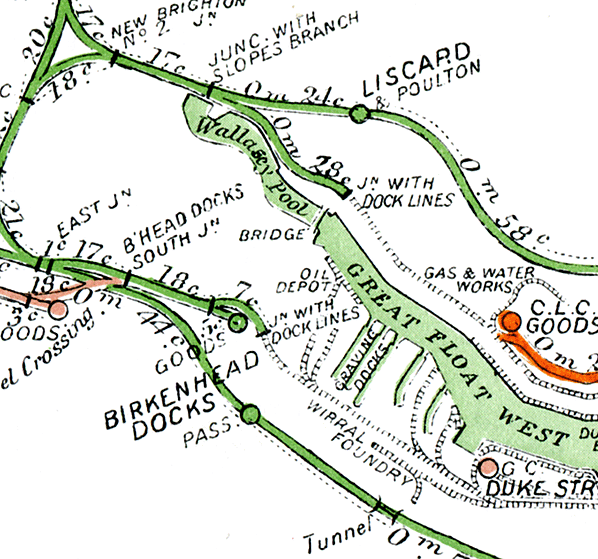
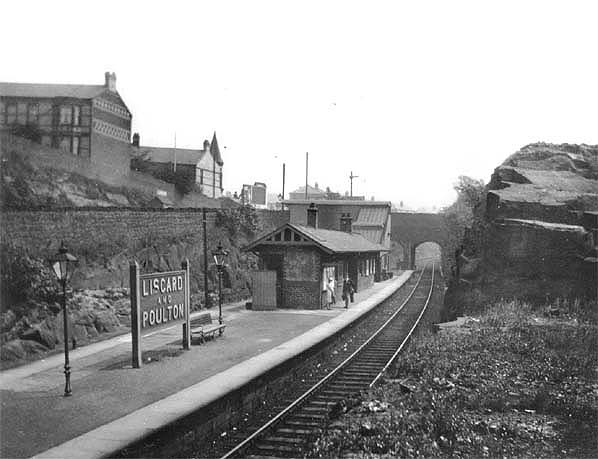
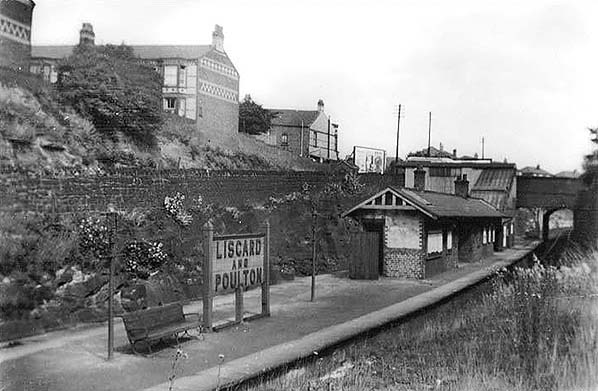
 Looking east at Liscard & Poulton station in 1945.
Looking east at Liscard & Poulton station in 1945.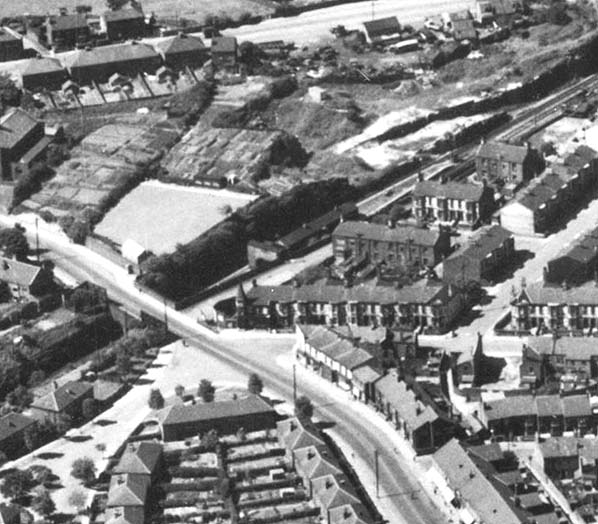
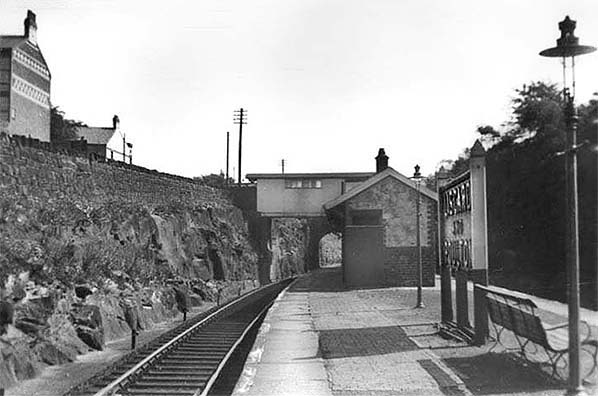

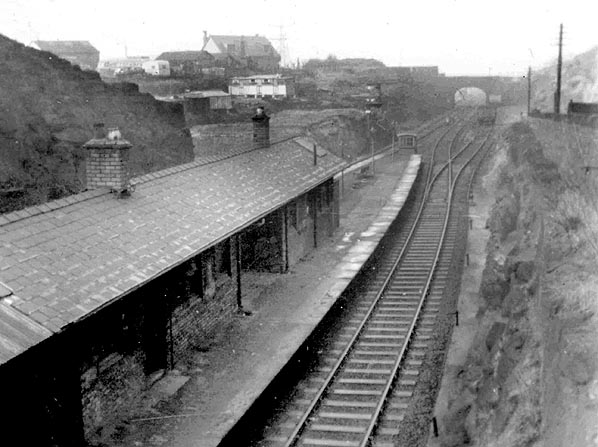

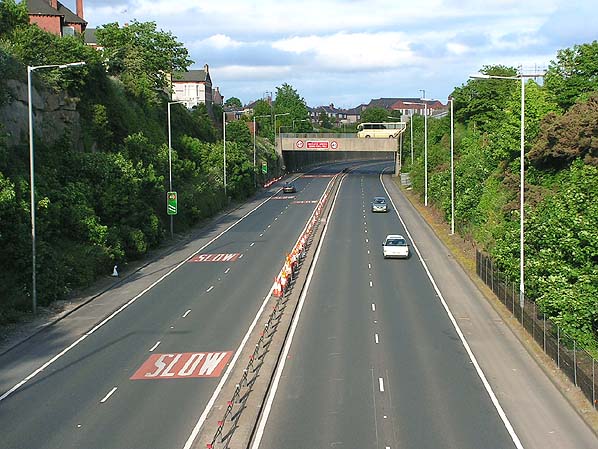
 Liscard & Poulton station was incomplete when the line opened, and it first appeared in the timetable in October 1895. Its single island platform, with two faces, was in a cutting west of Poulton Road. The platform was reached by a covered walkway from Poulton Road, north of the line; it crossed over the Seacombe-bound track, and a covered set of steps led down to the platform. Waiting facilities were in a timber building, the roof of which also provided a canopy. On the island platform a single-storey brick building contained booking facilities, waiting rooms and staff accommodation. The station had a short coal siding with a 5-ton crane at its western end, north of the passenger lines. A short siding on the south side of the station served a quarry and another private siding served the Wallasey Gas and Water Works.
Liscard & Poulton station was incomplete when the line opened, and it first appeared in the timetable in October 1895. Its single island platform, with two faces, was in a cutting west of Poulton Road. The platform was reached by a covered walkway from Poulton Road, north of the line; it crossed over the Seacombe-bound track, and a covered set of steps led down to the platform. Waiting facilities were in a timber building, the roof of which also provided a canopy. On the island platform a single-storey brick building contained booking facilities, waiting rooms and staff accommodation. The station had a short coal siding with a 5-ton crane at its western end, north of the passenger lines. A short siding on the south side of the station served a quarry and another private siding served the Wallasey Gas and Water Works.  During the 1930s the LMS resurrected a plan first mooted by the WR to electrify the former WR network. As the WR made an end-on connection with the electrified Mersey Railway (MR) which ran from Birkenhead Park to Liverpool Central, through running between the Wirral and Liverpool would be possible.
During the 1930s the LMS resurrected a plan first mooted by the WR to electrify the former WR network. As the WR made an end-on connection with the electrified Mersey Railway (MR) which ran from Birkenhead Park to Liverpool Central, through running between the Wirral and Liverpool would be possible.

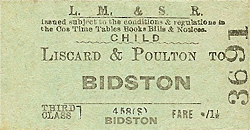




poulton_thumb9.jpg)
poulton_thumb10.jpg)

 Home Page
Home Page